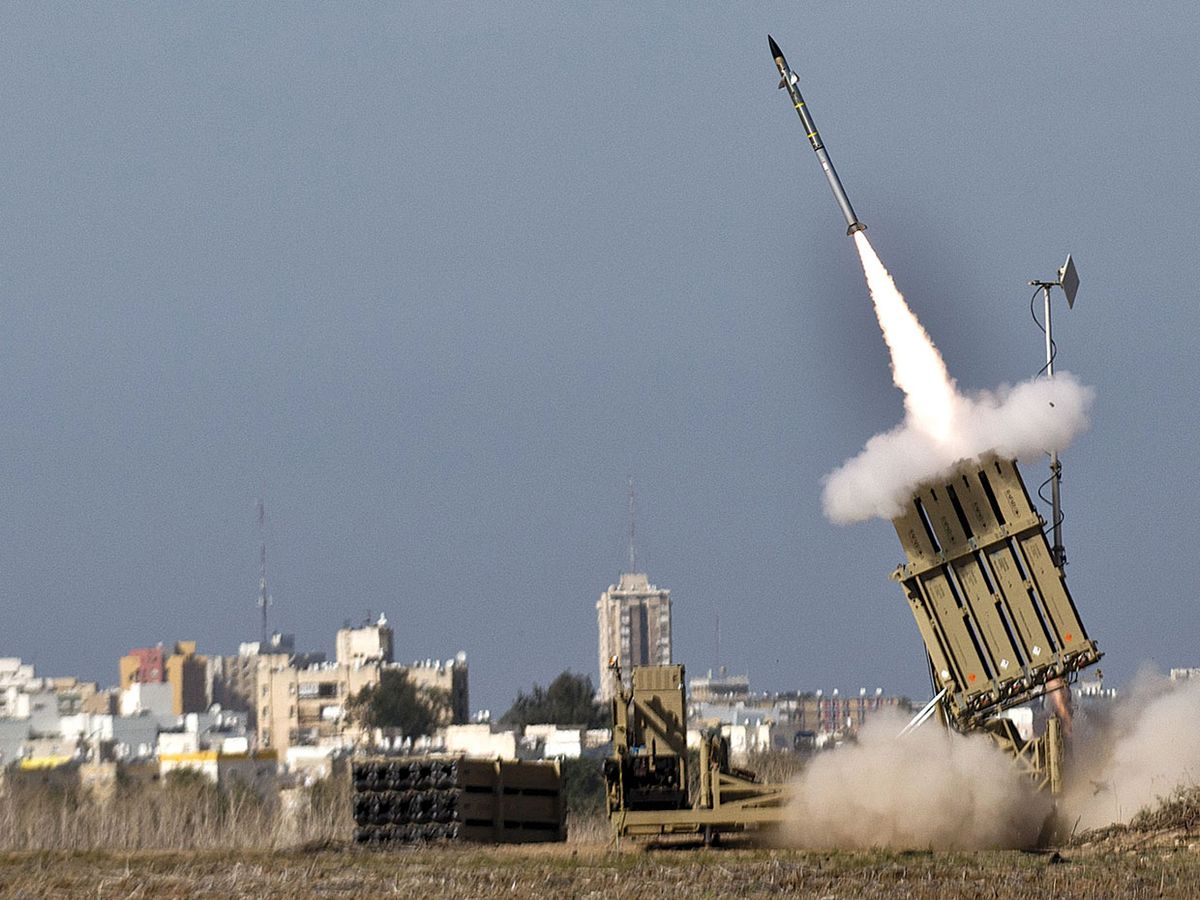Fifty years ago last month, U.S. president John F. Kennedy said that Nikita Khrushchev, the leader of the Soviet Union, had made an empty boast about his country’s anti missile missiles. “What you are trying to do is shoot a bullet with a bullet,” Kennedy said, coining an oft-repeated phrase. “Now, if you have a thousand bullets coming at you, that is a terribly difficult task which we have not mastered yet, and I don’t think he has. The offense has the advantage.”
Has Israel’s Iron Dome missile system finally proved the case for the defense? In November, during a six-day barrage from Gaza, the system reportedly intercepted about 85 percent of the rockets its algorithms deemed worth shooting at.
Iron Dome is clearly a technical success, having done exactly what its designers intended. According to physicist Dean Wilkening, a missile-defense expert at Lawrence Livermore National Laboratory, the reported shoot-down rate is believable. “I don’t think the Israelis will end up with egg on their faces the way the proponents of the Patriot antimissile defense did during the Gulf War.” After the war, the Patriots were found to have been rather ineffective.
Some U.S. experts are even saying that the success heralds a new era for missile defense in general. But such a judgment requires weighing the wide-ranging costs and benefits of the system. By this way of thinking it could be argued that Iron Dome is hitting a bullet with a golden bullet.
The attacking rockets weren’t the intercontinental ballistic missiles that concerned Kennedy, just unguided Qassams that could reach no farther than the cities of southern Israel, although a few Iranian Fajr-5 missiles did get as far as Tel Aviv and Jerusalem.
The Qassams miss their mark so often that it took an average of 300 of them to kill a single Israeli even before Iron Dome went into service, in 2011. But that’s okay from the attacker’s viewpoint, because the rockets scare civilians and cost less than US $1000 each, versus $50 000 to $100 000 for an Iron Dome interceptor. And even with the new defense system, Israeli civilians still had to run for cover during barrages.
The true cost also depends on scale. Back in the mid-2000s, Israel decided against two competing technologies, one of which, a U.S.-sponsored experimental laser system, would have been cost-effective only if it got the chance to destroy a lot of rockets. The laser would also have been cumbersome and subject to the vagaries of the weather. The Israelis also rejected Phalanx, an existing U.S. system based on rapid-fire guns, in part because of concerns about collateral damage if it were deployed in populated areas.
Nor can an antimissile defense be judged after a single outing; potential improvements must also be considered. The attacking side might fit its rockets with a basic guidance system, thus forcing Iron Dome to use up more of its expensive interceptors.
Better still, an attacker can defeat a defensive system by going around it. The Lebanese group Hezbollah, an ally of Iran’s, may have tried just such an idea even before the latest exchange in Gaza. In October it sent an unmanned aerial vehicle from Lebanon down the Mediterranean coast to Gaza and then into Israel. There, according to Iran, it gathered valuable intelligence before Israeli jets could shoot it down. It would seem a small matter to load a flotilla of UAVs with bombs and steer them to their targets along varying routes, at low altitude.
Such criticisms, however, ask too much of any one weapons system, argues Wilkening. “Iron Dome is a simple system against a very rudimentary threat, and one should not draw too many parallels between it and long-range missile defense,” he says. “But I think it shows that the technology is sufficiently mature and effective and that it’s worth taking seriously.”
The real test of Iron Dome’s importance for missile defense is whether other countries end up buying it. There were stirrings even before November: The Pentagon has expressed interest in having Iron Dome coproduced in the United States, and a South Korean politician suggested the same arrangement in 2011, as did Indian military industry officials earlier this year.
This article originally appeared in print as "Score One for the Antimissiles."
